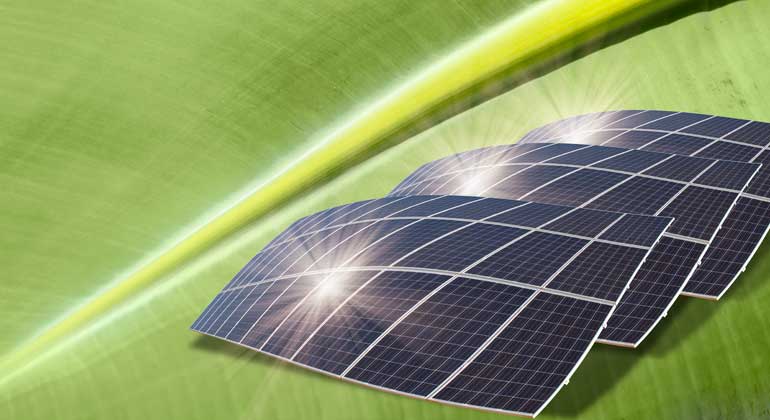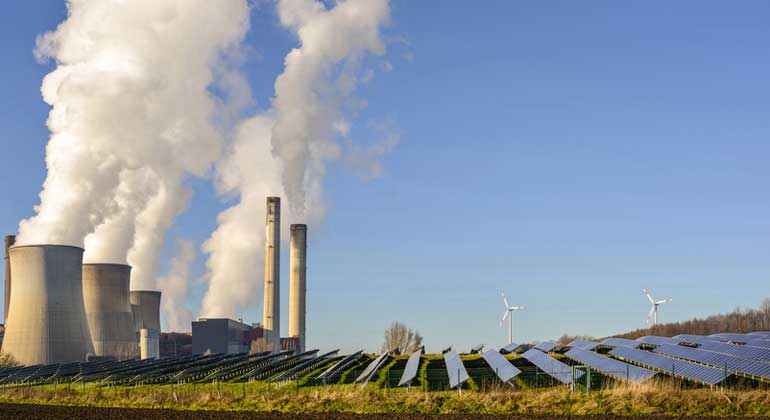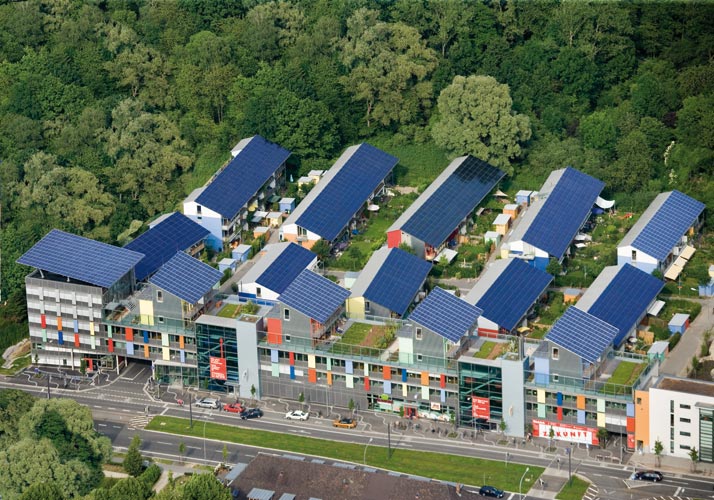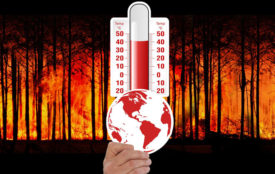Solar future versus fossil past
All life owes its existence to the sun – even the energy we obtain from coal, gas or oil is solar energy stored over millions of years.
In fact, the entire history of evolution is a single solar age, divided into three phases: The first phase was the hundreds of thousands of years in which the sun was the only source of energy for heat, wind and water power as well as food. In the second phase, mankind discovered combustible fossil energy sources such as coal, natural gas and crude oil in the earth. For a short time from around 1850, these ancient energy sources enabled us to enjoy a steep rise in technology and prosperity. However, these energy sources caused and continue to cause the man-made greenhouse effect and the resulting climate change. That is why we now need to build the third phase of the solar age: back to the sun as our only real source of energy, supplemented by another five huge renewable energy sources, indirect solar energy – wind, water, bioenergy, geothermal energy and ocean current and wave energy. In doing so, we will utilise technologies that would not exist without the fossil interim phase.
The fossil age will not come to an end for lack of fuel any more than the Stone Age came to an end for lack of stone. But renewable energies are so superior both ecologically and economically that they will defeat the old business models of coal, gas, oil and uranium in just a few years through exponential growth.
The first Green Prime Minister in Germany, Winfried Kretschmann, said during the 2021 election campaign when asked what was most important now: “Three things: firstly, climate protection, secondly, climate protection, thirdly, climate protection.”
It’s actually quite simple with a bit of economics: in 1970, when solar research was just getting off the ground in Germany, it cost around two euros to produce a kilowatt hour of solar power. When the Bundestag passed the Renewable Energy Sources Act in 2000, it was still 70 cents; today we still have production costs of around four to five cents in this country. Soon we will be at perhaps two and ultimately one cent – as is already the case in Central Africa, Arabia and India. This is thanks to the great progress made by solar researchers in conjunction with scientific institutes and the politicians and civil servants who have provided them with the money for research – mainly in Germany.
Courageous pioneers such as Hermann Scheer initiated and promoted this most important research turnaround in Germany. The gifted solar architect Rolf Disch was therefore able to build the first solar plus houses in Freiburg in the 1980s and an entire solar housing estate with solar plus houses in the 1990s, which produce more energy than is consumed in this estate. Solar plus houses can and must become the standard.
Also in Freiburg, the solar pioneer Georg Salvamoser (his motto: “You can slow us down, but you can’t stop us”) built the first CO2-neutral solar factory 25 years ago, and the city of Freiburg later built the first town hall that produces more energy than it consumes, as well as the first large zero-energy football stadium.

Sun and wind do not send a bill, they are – in stark contrast to the old energy sources – gifts from heaven, energy from the very, very top! Solar power is already being generated and utilised from Greenland to New Zealand – cost-effective, sustainable and climate-friendly. The sun’s unrivalled biological model is the photosynthesis of green plants and leaves. In the next 10 to 15 years, solar energy will play the most important role in the transition to a sustainable economy. By 2035 at the latest, we can and must have organised a 100% switch to renewable energies – not only in electricity production, but also in heat generation, mobility, the construction industry, industrial process heat, including the energy-intensive steel and cement industries, and agriculture.
New information technologies also play an important role in the rapid spread of green energy: without digitalisation, there will be no energy transition by 2030/2035. Knowledge and new technologies are the decisive basis for the future energy and mobility transition:
- Digitalisation will enable clean energy to be converted, stored, transported and distributed cost-effectively and quickly. After corona, the question is no longer: is our future digital, but only: how digital is our future?
- The new energy system will be decentralised, citizen-centric, intelligent, affordable and secure. It will not require large banks to finance large power plants.
- The EU’s energy legislation envisages that energy cooperatives will play an important role in the future.
- Clean citizen energy will be abundant and participatory in the future, just as information is already abundant, participatory and almost free in the IT technology revolution.
All these advantages are what make renewables so appealing and attractive. They are environmentally friendly, not harmful to the climate, unbeatably cheap and without any waste or emissions. And they are available to all people in all countries for all time. Wars have been fought over oil. Wars will never be fought over sun or wind.
Through a gentle energy transition, we will find a way from today’s fossil fuel culture to tomorrow’s solar culture. It is easy to say goodbye, especially for aesthetic reasons. After all, the fossil culture means smoking chimneys, dirt, dust, the smell of sulphur, oil-smeared birds, oil films in the water, impoverished and depleted landscapes, smelly and noisy cars. This is why, for example, the transition from the combustion engine to the electric car will take place far more quickly than most people realise today.
Source
Franz Alt 2024 | Translated with www.DeepL.com/Translator









